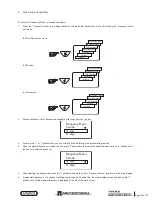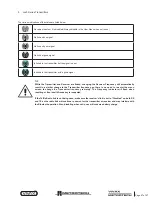
™
Page 62 of 67
6 Using the Accessories
59.6
65.5kHz
120dB
4G
7. Ensure the frequency selected on the vLoc3 RTK-Pro is the same as selected on the transmitter.
8. Place the stethoscope on each of the suspected target cables, if possible part each one from the bunch before each test,
with the flats of the antenna in line with the route of the cable.
9. Note the signal reading of each cable. The one with the largest reading is likely to be the target cable.
10. If necessary, adjust the sensitivity of the vLoc3 RTK-Pro so that the signal is within the operating section of the bar graph.
Data logging is possible when the remote antenna is connected. To record data, press the “i” button, then press the “+”
button as instructed on the screen
WARNING
The remote stethoscope antenna is a useful tool to help trace cables. However, it should not be used
as positive identification before an unused cable is cut. Always follow company procedures when
cutting disused or isolated cables.
TIP
The remote stethoscope antenna can be used to help trace disused and isolated cables. This process
can be further enhanced if the cable is isolated and is of twisted cable construction.
Method:
1. Connect the transmitter to two of the cores of the cable. At the far end, short together these two conductors making a loop.
2. Set the transmitter to a low frequency such as 640Hz and set the output to maximum.
3. At the point of interest, if possible part the suspected cable from the bunch then run the remote stethoscope antenna
along the suspected target cable keeping the flat portions of the antenna in line with the cable. If the correct cable is being
assessed the signal will increase and decrease in sympathy with the twist of the two conductors within the cable.









































